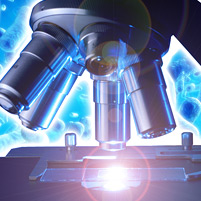Move Over, Batteries

Carnegie Mellon University's Kelvin B. Gregory and Philip R. LeDuc have created the world's smallest fuel cell — powered by bacteria.
Future versions of it could be used for self-powered sensing devices in remote locations where batteries are impractical, such as deep ocean or geological environments.
"We have developed a biological fuel cell which uses microbial electricity generation enabled by microfluidic flow control to produce power," said Gregory, an assistant professor of civil and environmental engineering at CMU.
No bigger than a human hair, the fuel cell generates energy from the metabolism of bacteria on thin gold plates in micro-manufactured channels.
It recruits necessary bacteria to create a biofilm that uses natural organic compounds as fuel to generate power.
Both researchers report that the evolution of microbial electricity generation is motivated by the potential for renewable energy sources and waste biomass to serve as a fuel for large-scale electricity generation.
"Our work also is prompted by increased interest in improved battery technology for small scale electronic devices and sensors," Gregory said.
Future versions of this tiny bacteria-powered fuel cell could replace batteries in microelectronic devices, since they are able to store more energy in the same amount of space.
"Our biology-powered fuel cell could be less costly to make and more easily deployed in remote areas than conventional batteries that require invasive maintenance," said LeDuc.
LeDuc is an associate professor of mechanical engineering with courtesy appointments in the Biomedical Engineering, Biological Sciences and Computational Biology departments.
Related Links: Civil & Environmental Engineering | Biomedical Engineering | Mechanical Engineering | Computational Biology | Biological Sciences
